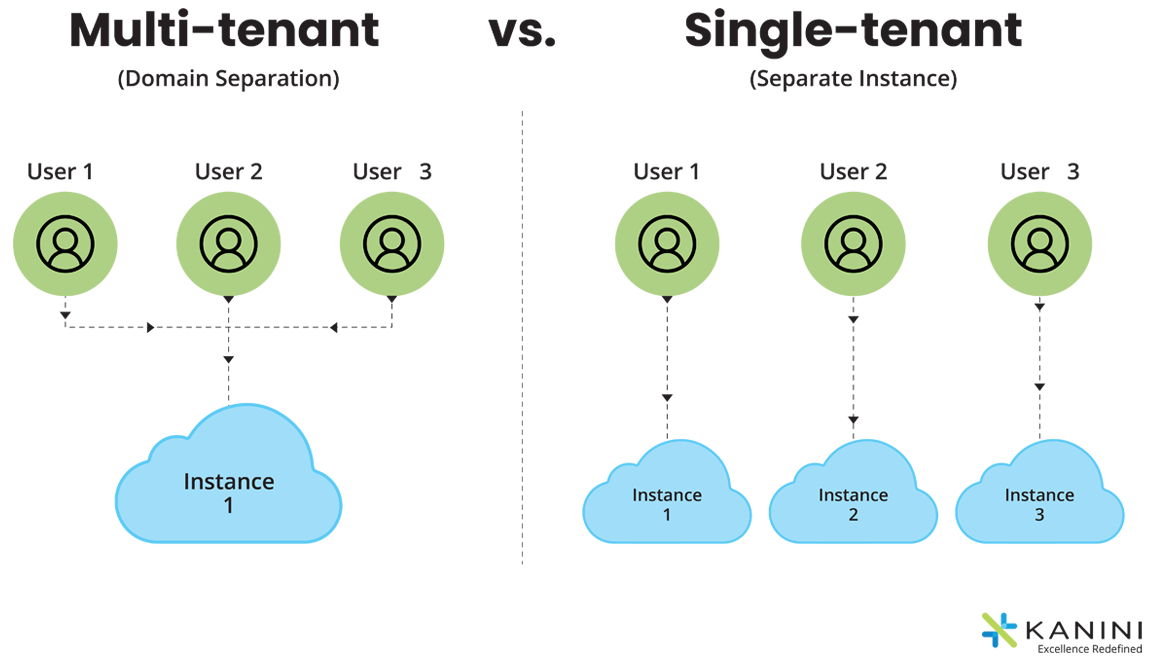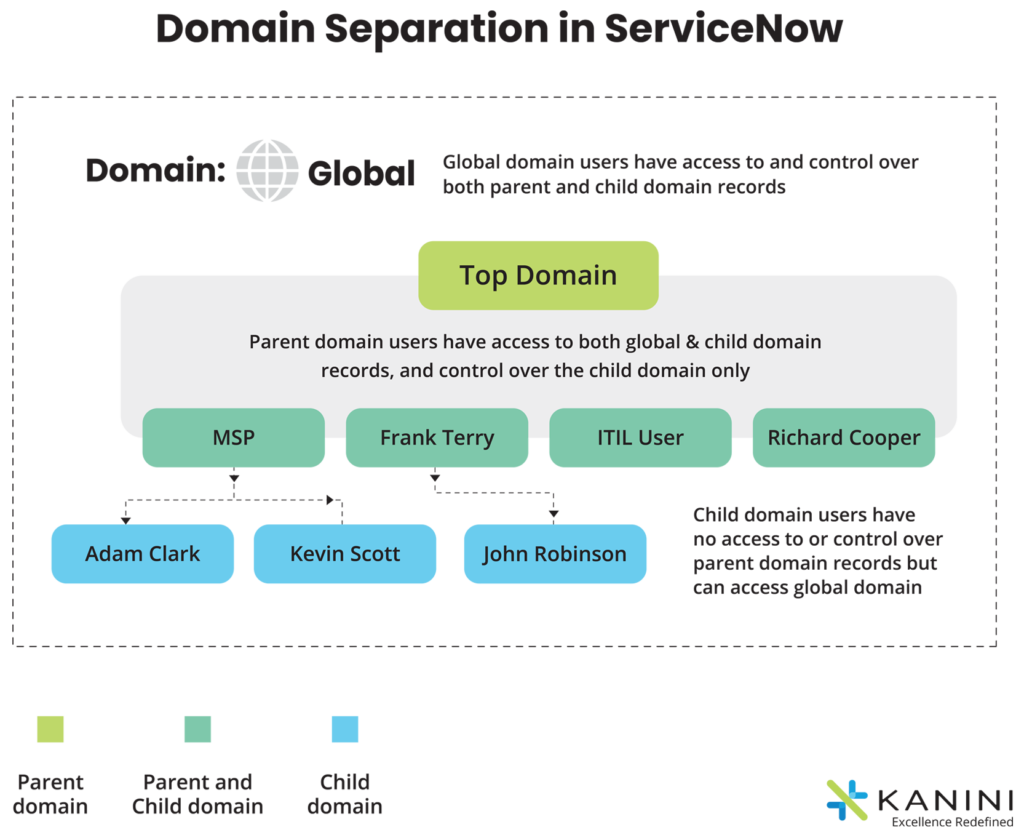Do you have multiple entities or units within your enterprise and want to enforce data separation between them? Do you want to have a centralized reporting system for multiple customers in a single instance of a software/application? If yes, then you need to know more about Multi-tenant architecture (Read: Domain Separation).
An example of a multi-tenant architecture would be Shopify, where each registered user shares the same central database but is still isolated from other users.

ServiceNow, which has been helping enterprises immensely through intelligent solutions that leverage Machine Learning (ML) and AI, offers domain separation configured within its instance for better management and operational efficiencies.
Want to manage multiple clients’ data & IT service requests on a single platform? Talk to our ServiceNow Experts to learn more about Domain Separation.
How Does ServiceNow Domain Separation Work?
If you take the previous apartment complex scenario, each tenant would have a door and a lock for their house. This way, their personal space is safeguarded from intruders or other tenants, subsequently allowing them to have more privacy and security.

What are the Potential Drawbacks of Domain Separation?
- Once domain separation is activated in your instance, it can only be disabled or deactivated and cannot be reversed.
- Setting up domain separation would require continuous monitoring of the process and ensuring proper configuration so that users are assigned to specific domains and have limited visibility. (That’s where expert service providers like KANINI come to play. You can get up to 40 admin hours, even for less than 40 licenses with us.)
- Domain separation may not be supported for every application in its initial release.
- Domain separation which is administered by service providers, may not be suitable for customers who want to have their own roadmaps and manage their processes and configuration.
So what is a separate ServiceNow instance and how do you choose between ServiceNow domain separation and a separate ServiceNow instance?
ServiceNow Separate Instance
Taking the previous scenario, if ServiceNow domain separation is similar to an apartment complex, a separate ServiceNow instance can be related to a standalone household.
Here’s How a Global Supplier of Technology & Services Streamlined the Management of Multiple Clients’ Data & IT Service Requests – Read Case Study
ServiceNow Domain Separation vs ServiceNow Separate Instance: Decision-Making Criteria
Here are the four major factors that can help an enterprise decide between these two solutions :
1. Size of Enterprises and Business Processes
ServiceNow Domain Separation can be beneficial for small and medium-sized enterprises where the workflows may not be too complex and their requirements may not be too volatile. If these enterprises have basic operations that involve implementing incident management or problem management and do not include extended ServiceNow modules, domain separation would be a good fit.
2. Affordability
3. Security and Privacy
4. Urgency
Domain separation is a good option for enterprises that have immediate requirements. It is easy to set up and the onboarding process is pretty swift. However, for those organizations that can afford to give it time, service providers can help them transit smoothly to a separate ServiceNow instance that can be structured according to their specific business requirements.
Wrapping Up
KANINI is a ServiceNow premier partner and an experienced Managed Service Provider (MSP) that has been helping enterprises with the seamless implementation of ServiceNow solutions and advanced operational strategies for improved business outcomes. Reach out to us at transformations@kanini.com to know more about how we can help your business grow with ServiceNow solutions.
Author









